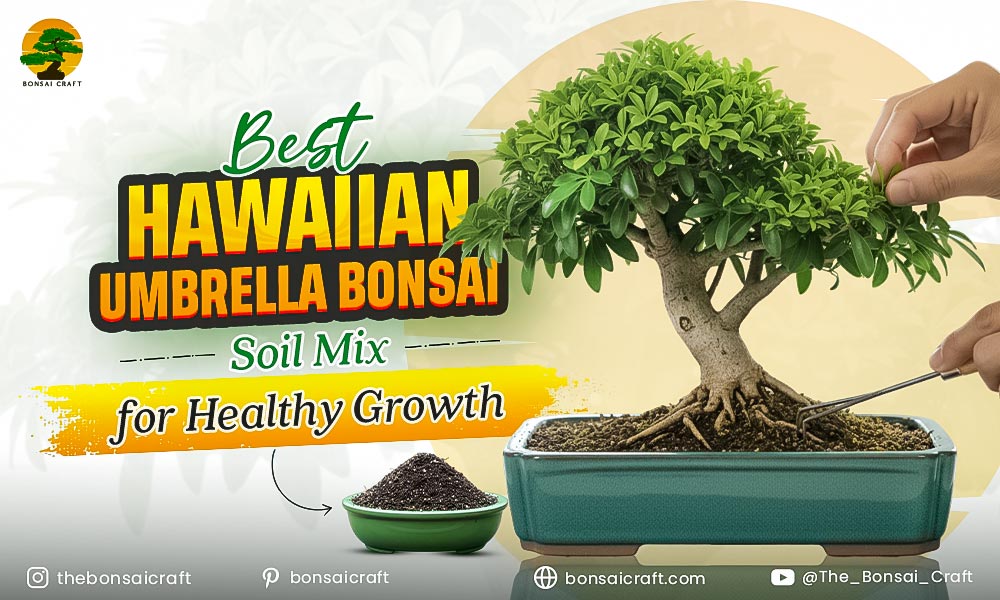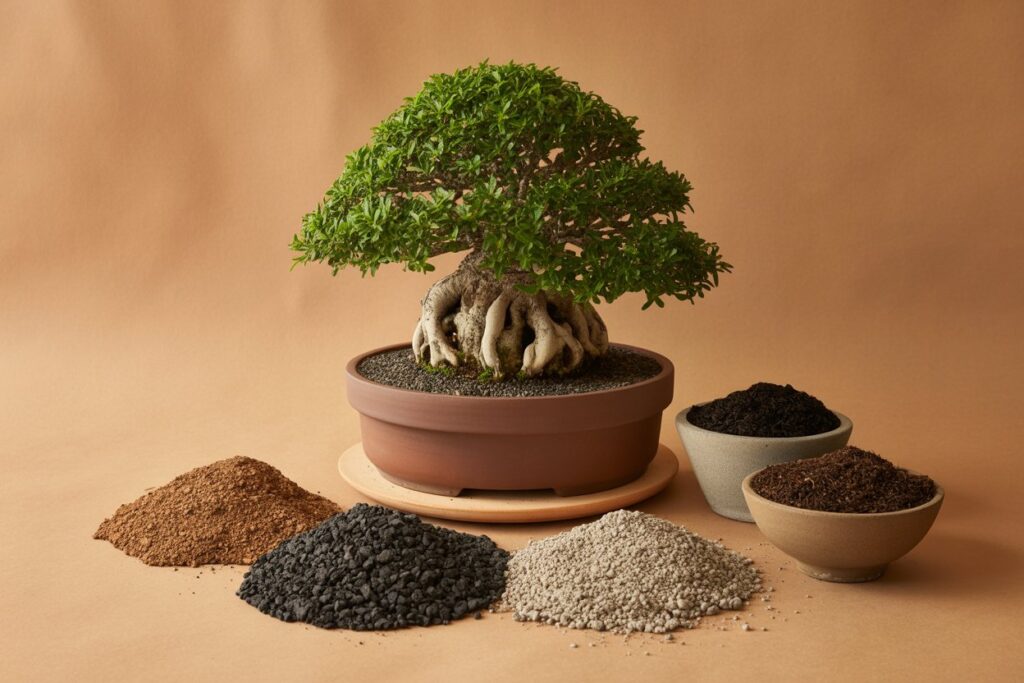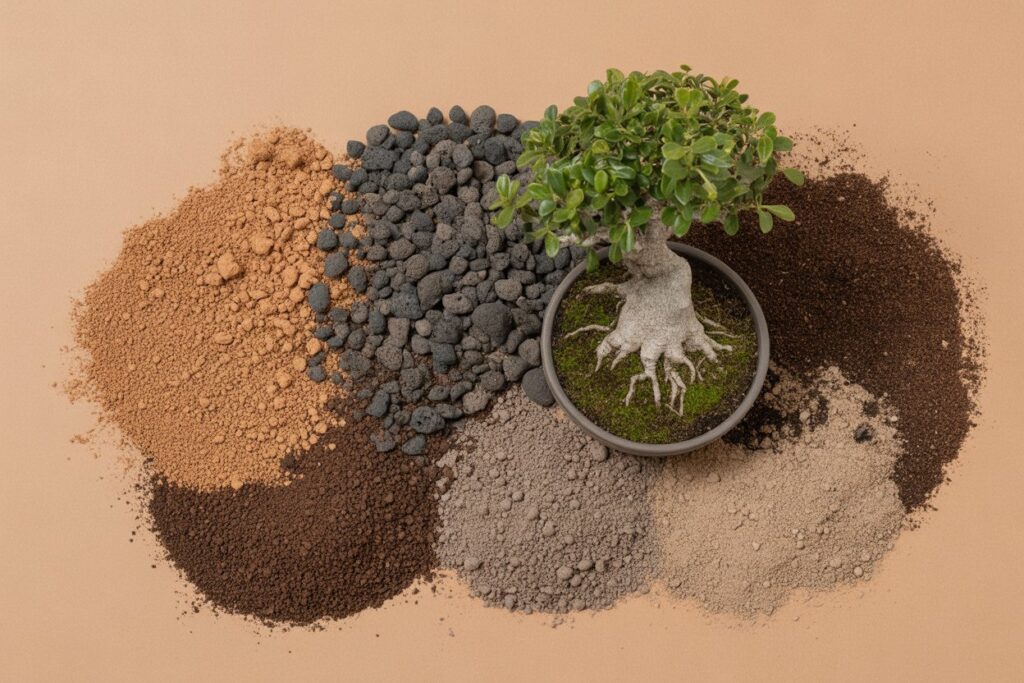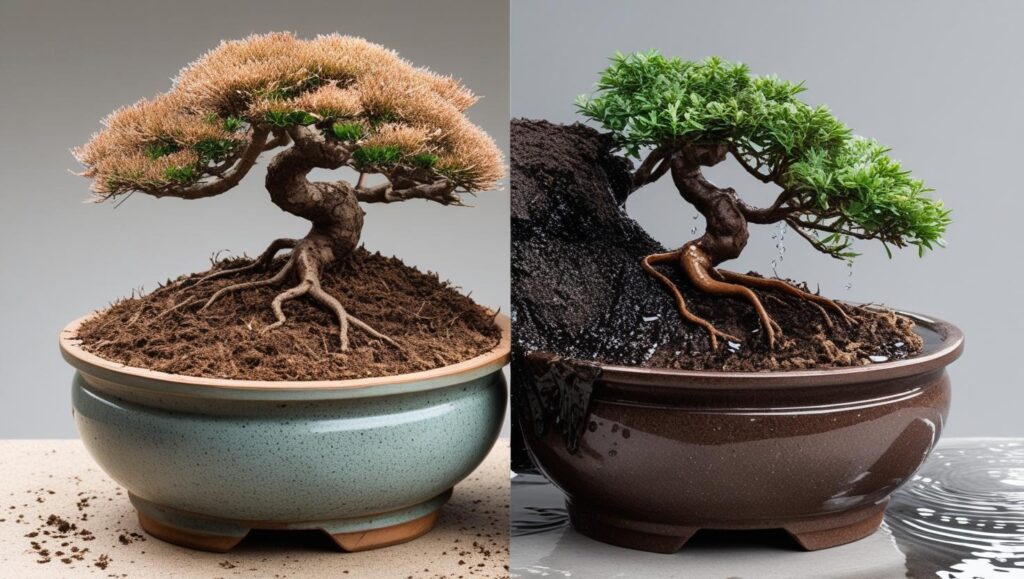
If you’ve recently acquired a Hawaiian umbrella bonsai (Schefflera arboricola), congratulations! This beautiful, indoor-friendly tree can be a stunning addition to your bonsai collection. However, to ensure your Hawaiian umbrella bonsai thrives, it’s essential to give it the right soil mix. Finding the best soil for Hawaiian umbrella bonsai is crucial for its health, growth, and longevity.
In this guide, we’ll walk you through everything you need to know about the Hawaiian umbrella bonsai soil mix, including the best ingredients, how to create your mix, and common mistakes to avoid. Whether you’re a seasoned bonsai enthusiast or a complete beginner, this guide will provide all the information you need to help your Hawaiian umbrella bonsai grow healthy and vibrant.
Understanding the Hawaiian Umbrella Bonsai
What Is a Hawaiian Umbrella Bonsai?
Hawaiian umbrella bonsai, also known as Schefflera, originated from Taiwan, not Hawaii! They are called umbrella bonsai because the leaves are shaped like umbrellas. As they are hardy and forgiving, they adapt well to indoor terrains, which is why they are a favorite among beginners. Like other bonsais, there are certain requirements that need to be fulfilled, including proper soil.
Why Soil Matters for This Tree
Bonsai trees are kept in shallow pots, which limit the growth of their roots. Unlike other trees, bonsai trees are unable to access water and nutrients easily. The soil for Schefflera arboricola bonsai has to provide the right nutrients, drain excess water, and allow air circulation.
Not meeting the right conditions can lead to root rot, nutrient deficiency, and stunted growth. This is why getting the Hawaiian umbrella bonsai soil mix right from the beginning is crucial.
What Makes the Best Hawaiian Umbrella Bonsai Soil Mix?
The Three Essentials:
- Good Drainage – Water must be removed quickly to avoid soggy roots.
- Proper Aeration – Roots require oxygen to remain alive and healthy.
- Moisture Retention – Soil must retain the appropriate volume of water to adequately hydrate the tree.
Ideal Soil pH and Texture
For this bonsai, the sweet spot for soil pH is between 6.0 and 6.5, making it slightly acidic to neutral. Avoid heavy, sticky soils such as garden loam or clay. Instead, light and gritty mixes that drain quickly and remain loose over time are preferred.
Helpful LSI Keywords:
- Drainage soil for bonsai.
- Bonsai tree soil pH value.
- Soil for indoor bonsai.
Ideal Hawaiian Umbrella Bonsai Soil Mix
Ideal Soil Composition:
To promote long-term health, here’s a proven, balanced soil mix for Hawaiian umbrella bonsais:
- 40% Akadama – Japanese clay-like granules that retain water and break down slowly over time.
- 30% Pumice – Retains valuable nutrients while providing air pockets.
- 20% Lava Rock or Perlite – Improves drainage and prevents compaction.
- 10% Organic Compost or Pine Bark – Enriches the mix with nutrients and moisture-holding capacity.
Nourishing elements alongside good drainage and aeration make this mix very well-balanced.
DIY Hawaiian Umbrella Bonsai Soil Mix
In case you need help locating specialized bonsai ingredients like akadama, this recipe is perfect for you:
- 2 parts cactus or succulent potting mix.
- 1 part coarse sand.
- 1 part perlite or crushed lava rock.
This version still gives you excellent drainage and aeration while keeping things budget-friendly.
How to Prepare and Repot Using the Right Soil
When Should You Repot?
Repot your Hawaiian umbrella bonsai every 2 to 3 years, ideally in early spring. Some signs that it’s time to repot include:
- Roots grow out from the drainage holes.
- Water is pooling on the surface after watering.
- Slower or stunted growth.
Step-by-Step Repotting Process:
- Remove the Tree – Carefully lift the bonsai out of its pot.
- Trim the Roots – Cut away about 10–20% of the roots if they’re tangled or circling.
- Prepare the Pot – Add mesh screens over the drainage holes.
- Add Soil – Fill half the pot with fresh Hawaiian umbrella bonsai soil mix.
- Replant the Tree – Center the tree and add soil around the roots.
- Water Thoroughly – Soak until water runs from the bottom.
Common Mistakes with Hawaiian Umbrella Bonsai Soil
Even if you’re using the right mix, a few common mistakes can throw things off.
1. Using Garden Soil
It’s too dense and holds too much water—this can lead to root rot quickly.
2. Poor Drainage
Even perfect soil won’t help if your pot doesn’t drain well. Always make sure your bonsai pot has holes at the bottom.
3. Ignoring pH Levels
An off-balance pH can lock out nutrients. Stick to a pH range of 6.0–6.5 for best results.
4. Keeping Old Soil for Too Long
Soil retains its structure and quality for only a limited period of time. With time, soil compacts or breaks down. Compaction greatly restricts drainage and aeration, which was good initially.
Seasonal Soil Adjustments
Summer:
To retain soil moisture during hot, dry months, add a bit more organic material like compost or moss.
Winter:
To keep soil lighter and better drained, use more pumice or perlite. Reduce watering, as the plant will take longer to drink.
Indoor vs. Outdoor Bonsai:
- Indoor trees often need more organic matter to help with dry indoor air.
- Outdoor trees benefit from grittier mixes that can handle rainfall without getting waterlogged.
Pro Tips to Boost Soil Performance
Here are some extra tips to help boost your Hawaiian umbrella bonsai soil mix:
- Try Mycorrhizae: These helpful fungi form symbiotic relationships with roots, helping with nutrient absorption.
- Use Top Dressing: A thin layer of moss or gravel on top can help retain moisture and make your bonsai look more polished.
- Invest in a Moisture Meter: Especially helpful for beginners who struggle to judge watering needs.
- Rotate the Tree: Rotating the pot every few weeks ensures even light exposure and balanced root growth.
FAQ: Best Soil Mix for Hawaiian Umbrella Bonsai
Q1. Can I use cactus soil for Hawaiian umbrella bonsai?
Yes, however, cactus soil should be used as a base. Add perlite and compost to form a well-rounded mixture.
Q2. How often should I change the soil?
You can change it sooner than the average 2-3 years mark if the tree shows stress signs.
Q3. My bonsai soil stays wet for too long—what should I do?
Ensuring there are drainage holes at the bottom of the pot is paramount. Increasing the amount of pumice or perlite in the mix also improves drainage.
Q4. Does this bonsai need fertilizer too?
Absolutely. While the soil provides structure, you must still nourish the tree with a balanced bonsai fertilizer roughly once a month.
Q5. Can I use regular potting mix?
Not by itself. You’ll have to combine it with sand, pumice, or perlite, which enhances drainage.
Conclusion
Selecting the best soil for a Hawaiian umbrella bonsai soil mix is the key to keeping your tree healthy and flourishing. Your bonsai will not thrive with normal potting soil as it compacts and is not free-draining, which compromises its roots. Simply avoid the mistakes many people make and get yourself like the diamond in the pond, and you will have a Hawaiian umbrella bonsai to show for it.
Your Hawaiian umbrella bonsai can flourish and make a lovely addition to your living space, with the right soil mix and careful attention. Happy growing!




